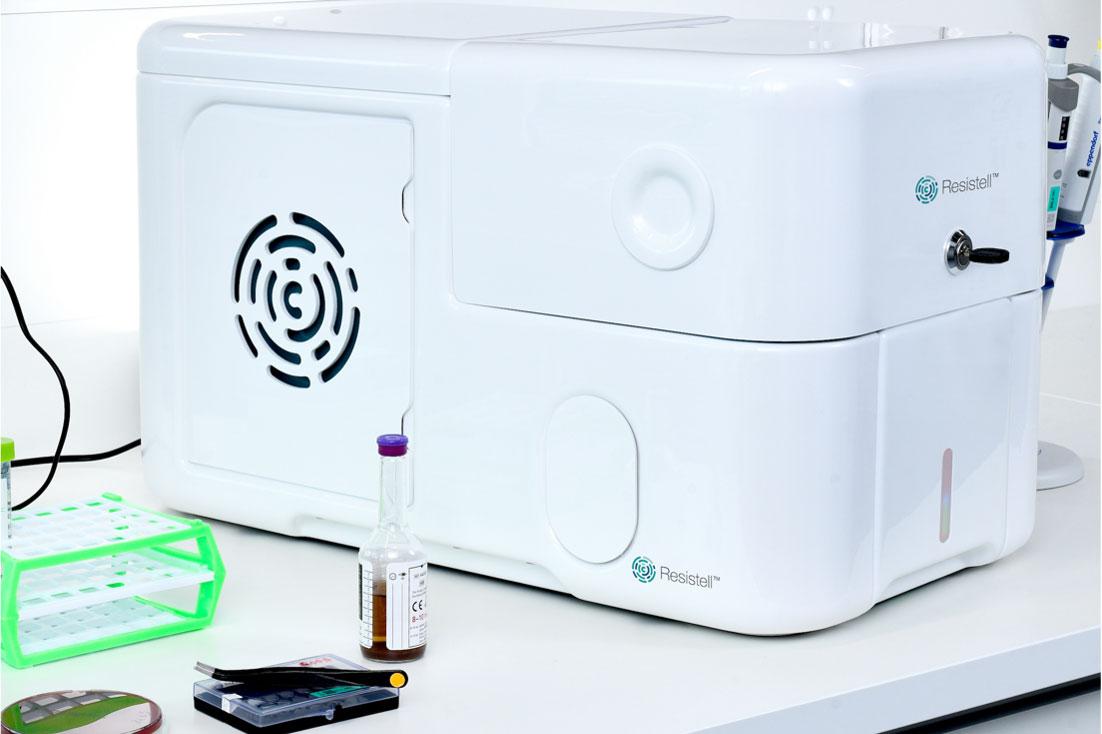A new diagnostic method brought to practice

Researchers developed a new method to identify bacterial resistance very fast. They translated it into a diagnostic device that is easy to use in everyday laboratory work.
Portrait / project description (ongoing research project)
An efficient way to limit resistant bacteria proliferation consists in starting the therapeutic process with the most efficient drug against a given infectious agent. For this, fast diagnostics that reveal the resistance profile of a pathogen are needed. But most conventional diagnostic methods used to determine the resistance of bacteria to antibiotics are slow. They take at least one to two days to produce results. Yet patients with serious bacterial infections need to start treatment immediately. In such cases doctors often administer broad-spectrum antibiotics, which not only can promote the development of resistance but can also lead to treatment failure.
Identifying resistance with glass fibres
A possible solution to this problem has now been put forward by researchers from EPFL. A team led by Giovanni Dietler and Sandor Kasas has developed a method that is considerably faster than previous procedures. It is based on the use of hair-thin glass fibres to which the live bacteria being tested are fixed. Their movements are transmitted to the fibres, the vibrations of which are recorded by a laser and visualised on a computer screen. If a bacterium is susceptible to an added antibiotic, it dies and the glass fibre stops moving after about 10 to 20 minutes. If, on the other hand, the laser is still detecting movement after this time has elapsed, then the bacterium is resistant to the antibiotic that has been administered.
For the detection of the movements, the team initially used Atomic Force Microscopes (AFM). But these devices are expensive, difficult to operate by non-specialized personnel and not adapted to be used as diagnostic tools. Another drawback is their limitation to operate in parallel. To overcome these hurdles, the researchers developed a novel type of sensors that can be easily parallelized and therefore further increase the response speed by measuring simultaneously dozens of sensors. They tested their new technology in a real-world setting at the Lausanne University Hospital CHUV and compared its results with traditional yet slower methods. It showed that their method is very reliable. Furthermore, the researchers could adapt the technology to the needs of clinical everyday live and improve the handling of the equipment.
On the way to broad application in clinical laboratories
Kasas and Dietler founded the start-up company Resistell together with the microbiologist Danuta Cichoka. The company has further developed the AFM technology and now offers a diagnostic device that is efficient and easier to use in everyday laboratory work. At present, the devices are mainly used in research. However, the company is working on a broad market launch for clinical diagnostics in hospitals and medical practices. Furthermore, Resistell will in the future implement the newly developed technology that could thus make a significant contribution to optimising the use of antibiotics in human medicine.
August 2022
Original title
A new rapid and reliable bacterial phenotypic diagnostic technique detecting bacterial susceptibility to antibiotics using optical fibers
